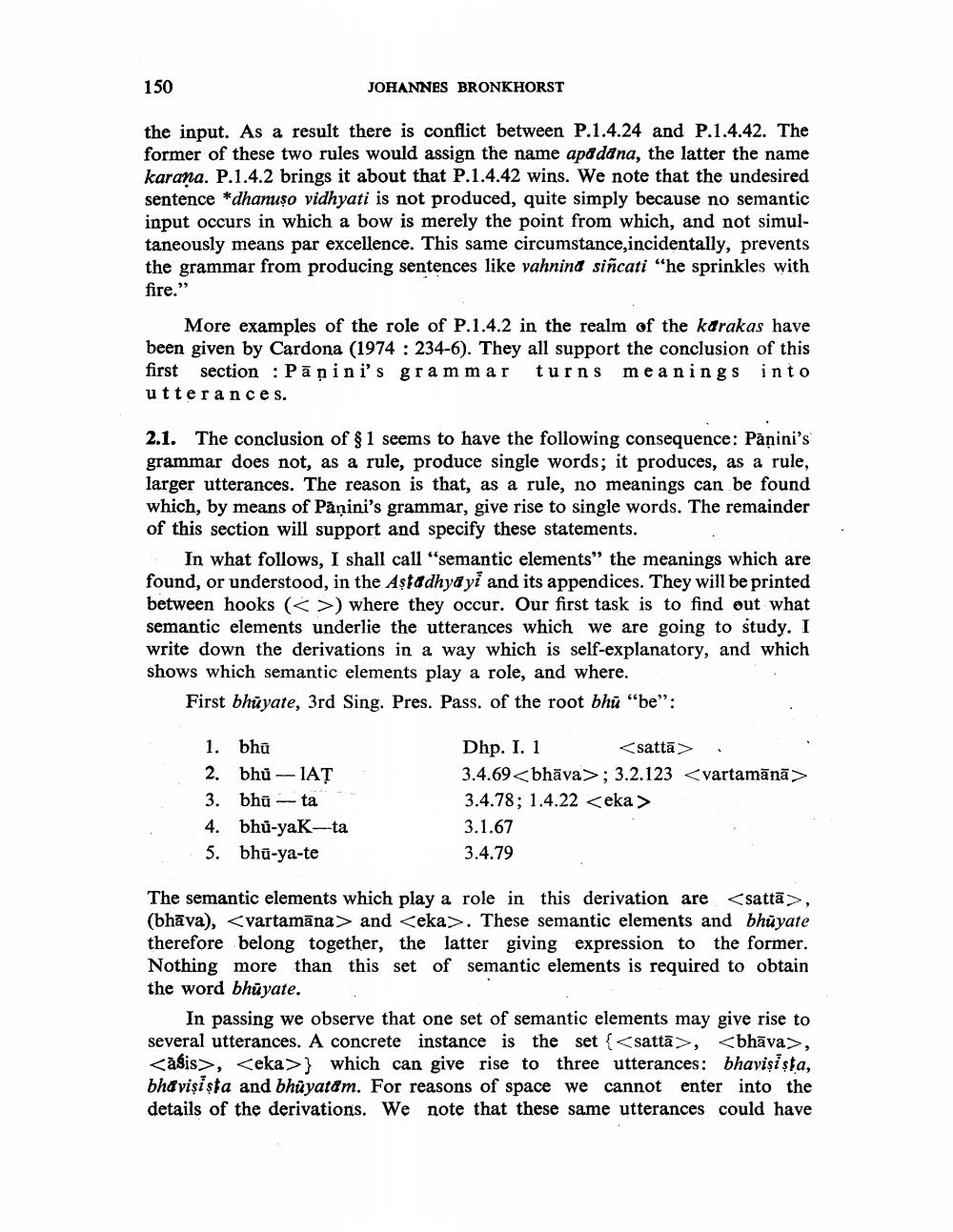________________
150
JOHANNES BRONKHORST
the input. As a result there is conflict between P.1.4.24 and P.1.4.42. The former of these two rules would assign the name apa dana, the latter the name karana. P.1.4.2 brings it about that P.1.4.42 wins. We note that the undesired sentence *dhanuso vidhyati is not produced, quite simply because no semantic input occurs in which a bow is merely the point from which, and not simultaneously means par excellence. This same circumstance, incidentally, prevents the grammar from producing sentences like vahnind siñcati "he sprinkles with fire."
More examples of the role of P.1.4.2 in the realm of the karakas have been given by Cardona (1974 : 234-6). They all support the conclusion of this first section : Pāpini's grammar turns meanings into utterances.
2.1. The conclusion of § 1 seems to have the following consequence: Pāṇini's grammar does not, as a rule, produce single words; it produces, as a rule, larger utterances. The reason is that, as a rule, no meanings can be found which, by means of Pāṇini's grammar, give rise to single words. The remainder of this section will support and specify these statements.
In what follows, I shall call "semantic elements" the meanings which are found, or understood, in the Aşta dhyā yi and its appendices. They will be printed between hooks ( >) where they occur. Our first task is to find out what semantic elements underlie the utterances which we are going to study. I write down the derivations in a way which is self-explanatory, and which shows which semantic elements play a role, and where.
First bhūyate, 3rd sing. Pres. Pass. of the root bhū "be":
1. bhū 2. bhū – IAT 3. bhū - ta 4. bhū-yaK-ta 5. bhū-ya-te
Dhp. I. 1
<sattā > 3.4.69<bhāva>; 3.2.123 <vartamānā > 3.4.78; 1.4.22 <eka > 3.1.67 3.4.79
The semantic elements which play a role in this derivation are <sattā>, (bhāva), <vartamāna> and <eka>. These semantic elements and bhūyate therefore belong together, the latter giving expression to the former. Nothing more than this set of semantic elements is required to obtain the word bhūyate.
In passing we observe that one set of semantic elements may give rise to several utterances. A concrete instance is the set {<sattā>, <bhāva>,
<asis>, <eka>} which can give rise to three utterances: bhavisista, bhavişi şta and bhūyatam. For reasons of space we cannot enter into the details of the derivations. We note that these same utterances could have




